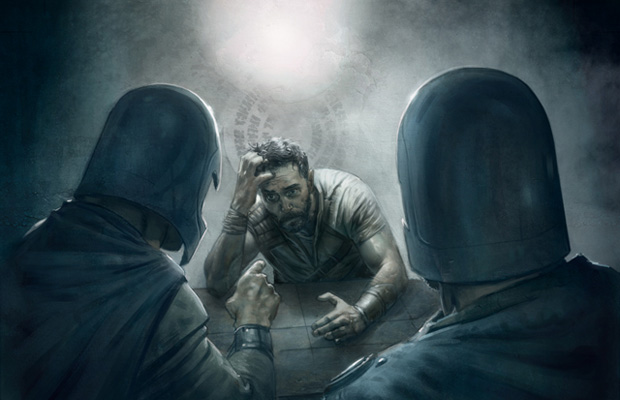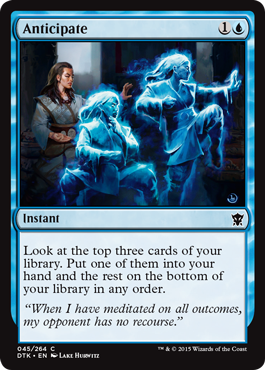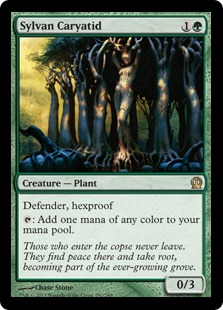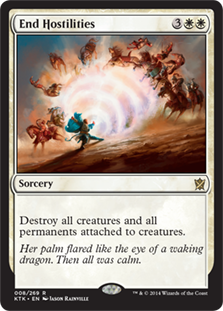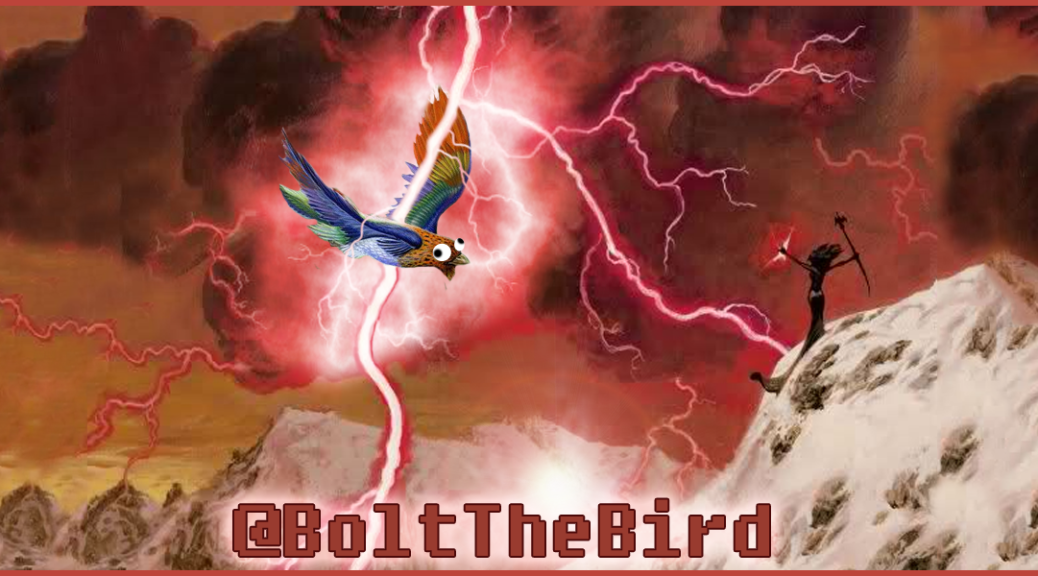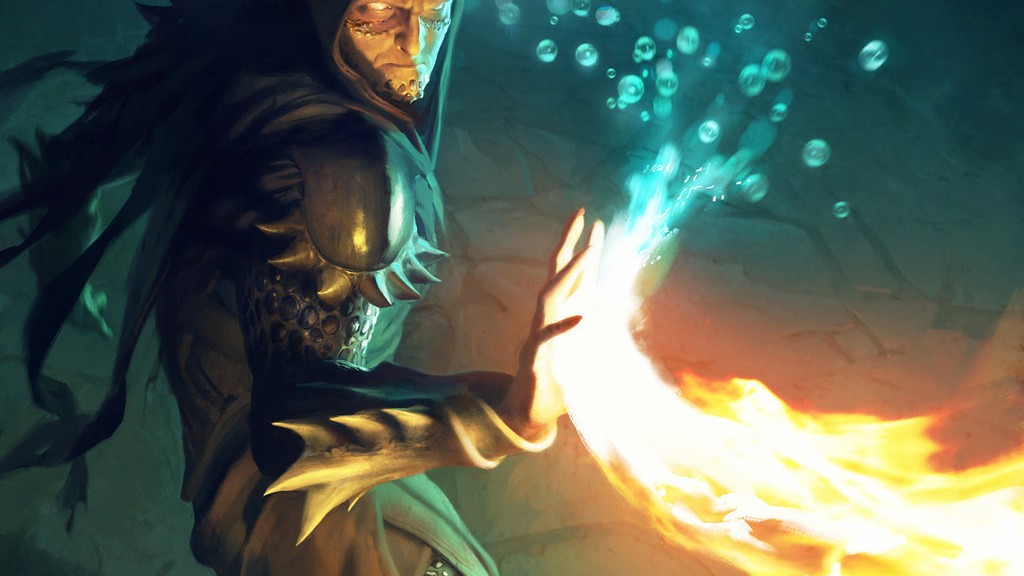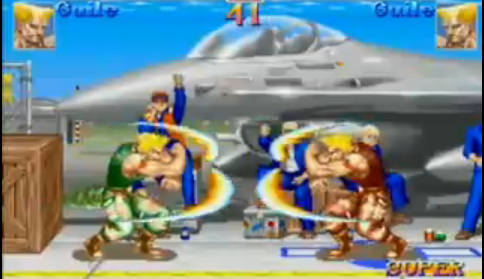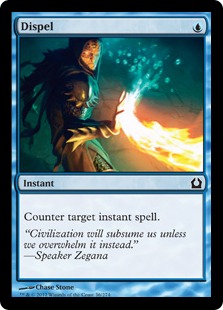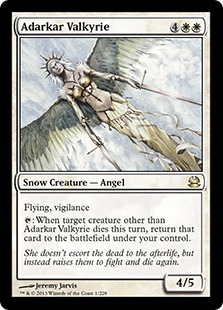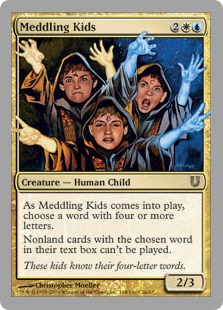Magic players, like any community of fans for a thing, has a wide knowledge spectrum in terms of understanding the game. There are people like Patrick Chapin who are able to analyze the game at such a crucial, fundamental level that they are able to write literal books on playing the game. There are also people who can’t tell a state-based effect from a hole in the ground. For most hobbies, this doesn’t preclude people from enjoying it—you can have fun watching a football game even if you can’t spot a blitz.
With Magic, however, it’s a little bit different. Newer players, and very casual ones1, don’t want to play against a Pro Tour champion or the local ringer. Even outside of the game, players of different skill levels can have vastly different views of what is going on in the Magic world—if Abzan Aggro wins every FNM at your store, the more casual players are going to assume that it is winning everywhere else, too. There is a demonstrable gulf between the more and less enfranchised players in terms of play skill and understanding what the wider Magic world really looks like. Those in the Magic finance community, whether they play frequently or not, are incentivized to be as ahead of the game as possible. Not only should you know which decks are good, but you should try to have an understanding of why and how they are good. While Magic finance is far from a science, your anticipations and speculations will be grounded by rational reasons, which is a great way to feel about something you’re spending money on.
The most important thing to know about Magic, fittingly, is also the hardest to know: the future. I seem to say it weekly, but Wizards of the Coast is very private about internal information. You’ve read my ramblings about the Zendikar Boom for weeks now, but perhaps the most public acknowledgment of it was Mark Rosewater’s podcast episode on 2009. I’m not going to go back to that well today, but I want to talk about one aspect of WOTC’s behind-the-scenes operation that has gotten much more public recently: development.
BRIEF ORGANIZATIONAL PROCESS ASIDE
It’s worth briefly mentioning how Magic design works for those of you who don’t know (this is going to be the very abridged version). All new Magic sets begin in what is called pre-design, where the focus is on the very basics in terms of style and flavor. Then it moves into design for a year or so, where the mechanics are fleshed out and designers start to come up with rough drafts of cards. Once the set is through all of the rough drafts (and a middle process called “devign”), it makes its way to development. This is where cards get things like more accurate converted mana costs, and where cards are tweaked to better fit the Standard environment that they are entering. To sum up the impacts of both processes: design knew it wanted to make Siege Rhino a splashy Abzan card, and development did the pricing and tweaks to get it there in light of the format it was entering (or rather, the format they expect it to be entering).
Of the two major processes, design and development, the one Magic finance enthusiasts should be most interested in is development. Mark Rosewater does a lot in telling us how design works, and quite frankly, anything we don’t already know would just be spoilers of future sets (like finding your Christmas presents in May, but knowing they are still months away).
With development, you can see what the pushes are towards (or away from!) in terms of shaping games and formats. Last week’s article by Sam Stoddard did an excellent job of spelling out some of the trends that we can expect to see in the future. I’d encourage you to go and read it (and the rest of his stuff), but I’ll give you a bit of a brief rundown, interspersed with my own examples and wry wisdom.
I Think They Call That a Reuben?
Development does not “test” Modern the way it does with Standard or Limited (the team realistically couldn’t, even if they wanted to). While Standard as a format has existed for many years, the formats themselves are radically different from year to year, and cards leave. With non-rotating formats like Modern and Legacy, however, you are only ever adding more cards to the heap, bannings aside. Design and development philosophies have changed radically from the days of Mirrodin (the first one), but (most of) the cards from that era are still in Modern. There are some types of cards that development just doesn’t want to print anymore, and trying to shift away from these cards is the team’s best tool to driving a change in Modern. Here are the three that Sam talked about, followed by one or two that I want to talk about:
Cheap and efficient card filtering: These are your Ponders and Preordains. Even though these types of cards are popular with control players and tempo decks, the elephant in the room is combo.
Modern’s earliest days were plagued by extremely aggressive combo decks that don’t reflect the style of play that Wizards wants to promote. If you remember Worlds in Rome from 1998, then you’ll know that WOTC isn’t eager to create another professional level environment where the coin toss is considered a key part of the match. Banning combo pieces offers diminishing returns in terms of effectiveness at managing the format, and so it is in WOTC’s best interest to get rid of the egregious enablers rather than all of the engines. Serum Visions and Sleight of Hand are allowed to exist for now, but you will see more cards like Anticipate printed in the future. There is a reason why Telling Time was the selection spell included in Modern Masters 2015. Hitting the best cards of this type is also one of the better sneaky ways to nerf Storm.
Fast mana (a.k.a. rituals): This is the much more blunt way of killing Storm. It also kills off the (extremely annoying) fringe archetype of All-In Red, which is basically presenting an early threat (in the form of Deus of Calamity or a bunch of Empty the Warrens tokens) and seeing if your opponent can answer it in time. It is miserable to play against, miserable to watch, and not the kind of interaction Wizards wants to promote.
Super powerful hate cards: This category best exemplifies the sophistication that Magic design has cultivated. While a card like Deathmark cleanly and elegantly demonstrates black’s core conflict with white (and green), Gloom just straight-up locks most white decks out of the game. Cards like these are less of “tactical adjustments” and more like punching your opponent in the throat between games. Most of these are in Eighth and Ninth Editions, because the worst offenders are reprints from early Magic. I’m not sure how good any of them really are, since the ability to splash a second and third color in Modern is very easy.
Birds of Paradise: This is one that I have observed personally. While ramp in the form of Elvish Mystic is acceptable on turn one these days, it seems like development really wants to push “of any color” to the two-drop slot, as we’ve seen with Rattleclaw Mystic and Sylvan Caryatid. While these cards are both better than Birds, they are also in the two-drop slot—compare this with Stoddard’s rationale on the card-drawing spells.
Wrath of God effects: These are starting to get pushed to five mana instead of four, which gives aggressive decks more potential to compete. Supreme Verdict cost 4, sure, but multicolor spells are typically “undercosted” because of the built-in downside of needing multiple colors.
Moving interaction to the battlefield from the stack: The two smaller points are really just examples of this larger one. Worlds ’98 (the Rome tournament I mentioned earlier) was really what marked the beginning of Magic‘s change in focus (it would take a few years to fully change, but this tournament was in many ways a black eye that WOTC was looking to not have repeated).
While there have been some bumps along the way, Standard now is a perfect example of what Wizards wants Magic to look like. Rather than having counterspell wars over resolving an effect that is going to either win or sway the game, the interaction between players occurs more in attacking and blocking, or knowing when not to. All Magic tutorials start with teaching players how to attack and the value of having creatures in play, but the professional scene in the late ’90s was totally devoid of that style of play.
What This Means For Us
The only problem with moving complexity and interaction to the battlefield is that it becomes more difficult to evaluate cards devoid of context. Boros Reckoner was not the most hyped card at the release of Gatecrash, because it was difficult to analyze in a vacuum. Courser of Kruphix suffered similarly, as did Goblin Rabblemaster and Siege Rhino. All of these cards went on to be major role players in Standard, with opportunities to buy in cheap before their prices shot up based on demand. It’s easy to evaluate cards with clear historical precedents (Satyr Firedrinker is a Jackal Pup!) or that are clearly pushed (who didn’t think that Abrupt Decay would be a star?), but moving forward, I expect there to be more Standard formats like the one we are seeing now.
Specifically, the type of Magic that is being played in Standard right now is the kind that Wizards wants to be able to promote, and I imagine it’s partially why the company tried to axe Modern Pro Tours. It is very difficult to overhaul Modern to be shaped in the image that WOTC wants, and the backlash of banning all the cards it would take to do so would likely be insurmountable. It could happen eventually, but it would be over the course of years, probably by pushing people to play decks similar to the ones they played in Standard.
I say all of that to say this: knowing the direction that the development team wants to take Magic is an important way of knowing where Magic finance is headed. The things that get pushed the hardest now are the ones with the most safety valves: creatures. It’s important to know what to look for, and when Magic Origins starts to roll around, I’ll go through the spoiler with you. Who knows? Maybe we’ll find the next big thing.
Hope all of you who are playing in the GPs this weekend have a great time.
Best,
Ross
1 Shout-out to the Invisibles.
